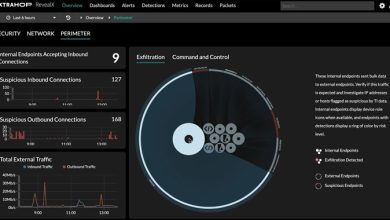Asia Pacific Financial Crime Compliance Costs Reach USD $45 Billion Annually

LexisNexis® Risk Solutions released the findings of its latest True Cost of Financial Crime Compliance Study – Asia Pacific. The commissioned study conducted by Forrester Consulting reveals that financial crime compliance costs increased for 98% of financial institutions in 2023. The total cost of financial crime compliance in the APAC study countries has reached U.S.$45 billion.
Financial institutions (FIs) are seeking ways to reduce costs while complying with regulations, with 39% identifying the escalation of financial crime regulations and regulatory expectations as the primary factor driving increases in compliance costs. Eighty-one percent (81%) of FIs are prioritizing compliance program cost-cutting in the next 12 months.
The intensifying challenge of keeping up with the complex sanctions environment is leading financial institutions to confront a growing screening workload, resulting in an increase in the number of screening alerts at 79% of organizations.
Key findings from the study:
-
Technology costs are driving increases in expenses for financial institutions, emphasizing the substantial investment required to meet stringent compliance requirements. Specifically, 70% of organizations noticed rises in technology costs related to compliance/know-your-customer (KYC) software, while technology costs associated with networks, systems and remote work have increased at 74% of FIs.
-
Seventy-five percent (75%) of APAC institutions cited labour costs as a primary driver of cost escalation. This emphasizes the investment needed in highly qualified compliance professionals to effectively address and fulfil stringent compliance requirements.
-
Cryptocurrencies, digital payments and AI technologies are emerging as tools for illicit activities. Organizations are grappling with the impact of these sophisticated criminal methodologies within an already complex regulatory landscape. When asked about the types of financial crime, FIs had observed significant increases of more than 20% in the past 12 months, with 23% having identified financial crime involving cryptocurrencies, while 23% reported heightened use of artificial intelligence (AI).
“The cost of financial crime compliance is clearly rising for financial institutions across APAC which is being felt by teams across the compliance workflow,” said Matt Michaud, Global Head of Financial Crime Compliance at LexisNexis Risk Solutions. “Skilled in-house compliance teams are essential, but businesses should be actively seeking ways to reduce labour costs while improving compliance efficiency. Criminals adapt quickly and FIs require a partner with advanced tools, data and analytics to not only keep pace but to stay ahead.”
The True Cost of Financial Crime Compliance Study – Asia Pacific compiles responses from 271 senior decision-makers responsible for financial crime compliance at financial institutions in the APAC region including Australia, China, India, Japan and Singapore. It highlights key pain points related to the cost, current state and challenges presented by financial crime compliance operations.
Recommendations for combating financial crime:
-
Balance compliance effectiveness with customer experience. Financial institutions are grappling to acquire and retain customers in the digital era. The winners will be those who can deliver seamless customer onboarding and transaction experiences. Striking a balance between customer experience and financial crime compliance efficiency involves streamlining KYC and onboarding processes, reducing false positives and allowing legitimate transactions to proceed without inconveniencing the customer.
-
Embrace new technologies to counter emerging financial crimes. Criminals are increasingly using new technologies for their activities. In addition to deploying advanced AI- and ML-based compliance models, financial institutions should leverage privacy-preserving technologies and advanced analytics to swiftly identify new crime patterns to outpace cybercriminals and counter sophisticated financial crime.
-
Employ compliance tools and analytics to manage costs and enhance efficiency. Labour costs rank highest in financial crime compliance spending. While in-house compliance teams with expertise are crucial, partnering with an experienced and proven technology provider will alleviate some labour costs and enhance compliance efficiency. To identify the right partner, organizations should focus on their future-fit capabilities, including proven expertise in digital financial services, ease of integration, robust data management, advanced analytics, lightweight software-as-a-service deployments and the ability to balance effectiveness with customer experience.
Download the latest True Cost of Financial Crime Compliance Study – Asia Pacific.




